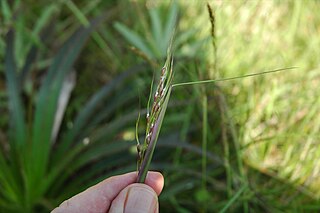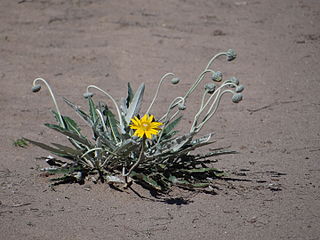
Nothoscordum is a genus of New World plants in the onion tribe within the Amaryllis family. It is probably paraphyletic. The genus is native to North and South America, though a few species have become naturalized in various parts of the Old World.

Banda Oriental, or more fully Banda Oriental del Uruguay, was the name of the South American territories east of the Uruguay River and north of Río de la Plata that comprise the modern nation of Uruguay; the modern state of Rio Grande do Sul, Brazil; and some of the modern state of Santa Catarina, Brazil. It was the easternmost territory of the Viceroyalty of the Río de la Plata.

The Río de la Plata basin, more often called the River Plate basin in scholarly writings, sometimes called the Platine basin or Platine region, is the 3,170,000-square-kilometre (1,220,000 sq mi) hydrographical area in South America that drains to the Río de la Plata. It includes areas of southeastern Bolivia, southern and central Brazil, the entire country of Paraguay, most of Uruguay, and northern Argentina. Making up about one fourth of the continent's surface, it is the second largest drainage basin in South America and one of the largest in the world.

Rumo, formerly known América Latina Logística (ALL), is a Brazilian logistic company, mainly focused in the railway line logistics in Brazil, being the largest company in Latin America in this segment, the company also provides transportation services such as logistics, intermodal transport, port operations, movement and storage of merchandise, administration of storage facilities and general storage. It is also involved in lease of railroad equipment to third parties, and offers road transport services in Brazil through América Latina Logística Intermodal S.A.

Cypella is a genus of herbaceous, perennial and bulbous plants in the family Iridaceae. It is distributed in South America, from Peru and Brazil to Northern Argentina. The genus name is likely derived from the Greek word kyphella, meaning "hollow of the ear", and alludes to the shape of the inner tepals.

Piptochaetium, or speargrass, is a genus of New World plants in the grass family, native to North and South America. Piptochaetium is a bunchgrass genus in the tribe Stipeae.

Eustachys is a genus of tropical and subtropical plants in the grass family. It is native primarily to warmer parts of the Americas, with a few species in Africa and Asia.

Hysterionica is a genus of flowering plants in the family Asteraceae.
Neocabreria is a genus of Brazilian flowering plants in the tribe Eupatorieae within the family Asteraceae.
Symphyopappus is a genus of South American plants in the tribe Eupatorieae within the family Asteraceae.

Urolepis is a genus of South American plants in the tribe Eupatorieae within the family Asteraceae.

Trichocline is a genus of Australian and South American plants in the tribe Mutisieae within the family Asteraceae. It consists of one species from Australia (T. spathulata) and twenty-three from South America.
Holocheilus is a genus of flowering plants in the family Asteraceae.
Sommerfeltia is a genus of South American plants in the tribe Astereae within the family Asteraceae.

Schlechtendalia is a genus of South American plants in the tribe Barnadesieae within the family Asteraceae. It is known in Portuguese as bolão de ouro, meaning "gold bullion". It is a perennial herbaceous plant, with rigid, linear leaves with a pointy tip. The corollas of the florets are yellow, and of the subbilobiate type, with four lobes merged into a strap, but split into teeth over half as deep, and one lobe free. This species flowers from September to December and the fruits are ripe in January or February. The only known species is Schlechtendalia luzulifolia, native to southern Brazil, Uruguay, northern Argentina. This species has sixteen chromosomes (2n=16).

Stenachaenium is a genus of South American plants in the family Asteraceae.

Picrosia is a genus of South American plants in the tribe Cichorieae within the family Asteraceae.

Battus polystictus is a species of butterfly from the family Papilionidae that is found in Brazil, Paraguay, Uruguay and Argentina. Male and female are less dimorphic than in related species as regards wing shape and pattern, but the male has a prominent pale yellow lengthwise stripe on the upperside of its abdomen.

Micropsis is a genus of South American flowering plants in the family Asteraceae.
Criscia is a genus of South American flowering plants in the family Asteraceae.














